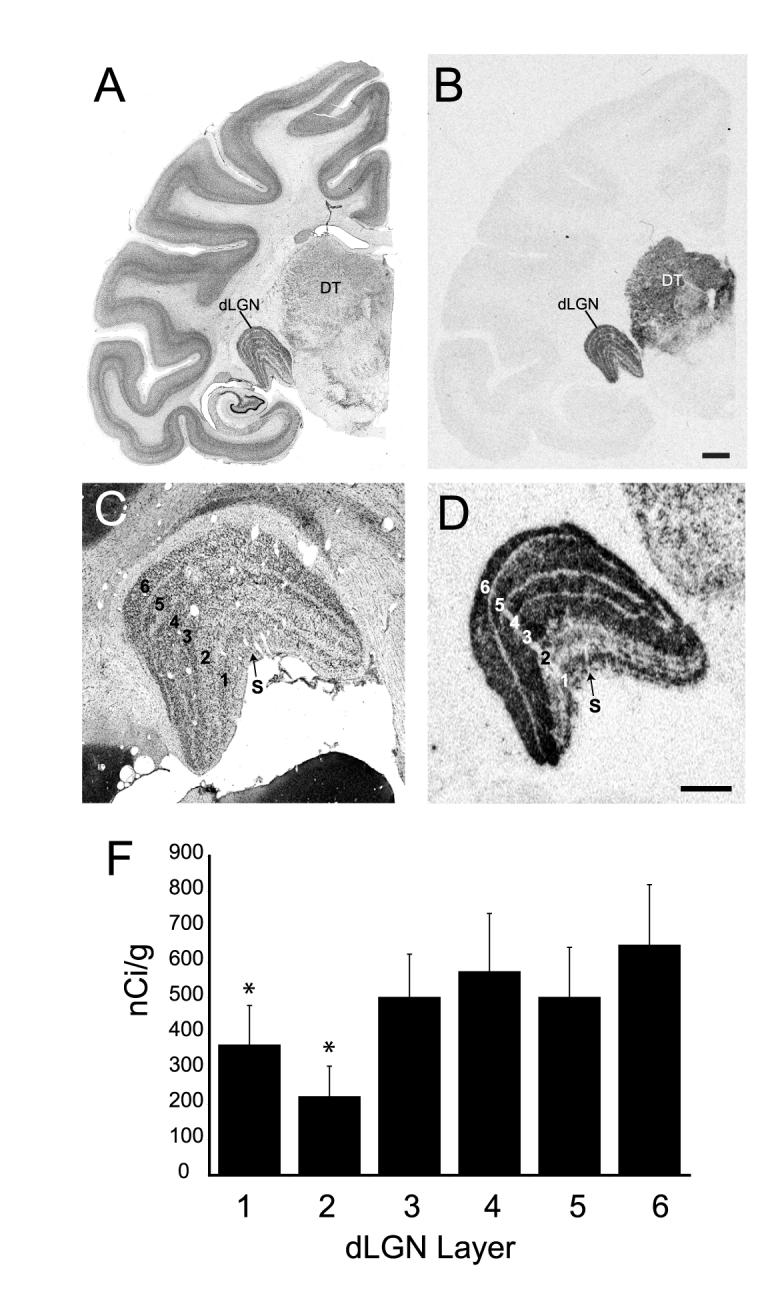Figure 6.

TCF7L2 mRNA expression is overrepresented in parvocellular layers of monkey dLGN. (A) Brightfield image of a Nissl stained coronal section of monkey brain at the level of mid dLGN. (B) Image from a film autoradiogram illustrating in situ hybridization for TCF7L2 mRNA in a coronal section adjacent to that in (A). TCF7L2 mRNA is mostly restricted to dorsal thalamus (DT) and shows prominent expression in dLGN. (C) Higher power image of Nissl stained dLGN showing the principal relay layers (1-6) and the S layers. (D) Higher power image of a section adjacent to that in (C) showing TCF7L2 in situ hybridization. TCF7L2 mRNA expression is greater in the parvocellular layers (3-6) compared to magnocellular layers (1, 2). Hybridization to TCF7L2 mRNA is also observed in the S layers. (F) Calibrated densitometric measures of film autoradiographs illustrate the enrichment for TCF7L2 hybridization in parvocellular layers compared with magnocellular layers. Measures are means ±S.E.M. *, p < .01 (n=5) ANOVA, post hoc students t-test. Scale bar = 2 mm in B (applies to A and B) and 1 mm in D (applies to C and D).
